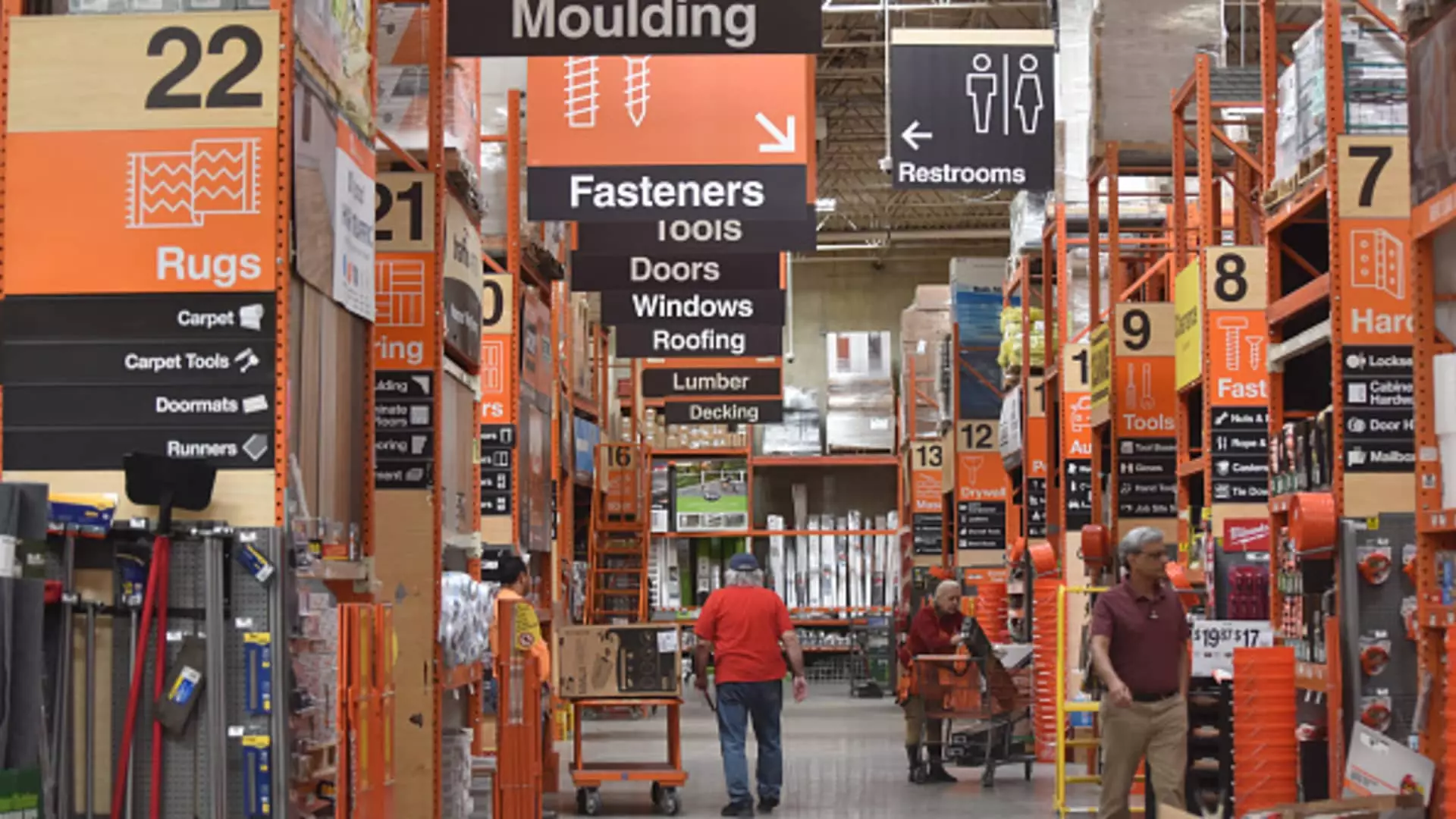Home Depot’s recent quarterly earnings announcement reveals a more promising picture than expected, hinting at a potential recovery as the company navigates the complexities of the current economic landscape. As consumers remain cautious due to high interest rates and ongoing economic challenges, Home Depot is strategically positioning itself for growth heading into 2025. The latest figures demonstrate a nuanced interplay between challenges and opportunities, giving investors a reason to remain optimistic about the retailer’s future.
In the quarter ending October 27, 2023, Home Depot posted net sales of $40.2 billion, reflecting a 6.6% increase year-over-year. This result surpassed industry analyst estimates of $39.3 billion, suggesting that the retailer is not merely weathering the storm of economic fluctuations but is also poised for recovery. However, the adjusted earnings per share (EPS) fell by 1.8%, landing at $3.78, which although lower than previous figures, still surpassed the anticipated $3.64 per share.
Interestingly, same-store sales experienced a decline of 1.3%, with U.S.-based stores reflecting a slightly lesser drop of 1.2%. For both metrics, the declines were less severe than analysts had forecasted, which is indicative of a stabilization in sales as the previous quarter had projected steeper drops. Notably, share prices remained unchanged during afternoon trading, signaling a cautious but stable investor sentiment.
The retail giant is confronting significant external pressures, primarily stemming from high-interest rates and macroeconomic uncertainties that have impacted consumer behavior. Despite the strains, particularly within larger remodeling projects—a sector feeling the brunt of borrowing costs—there are positive indicators emerging. CEO Edward Decker has noted a gradual improvement in consumer engagement regarding seasonal products, particularly following adverse weather patterns that had previously hampered sales performance.
Home equity is an area where Home Depot sees a potential silver lining. As rates on Home Equity Lines of Credit (HELOCs) begin to fall, homeowners may find themselves more willing to invest in major renovation projects, thereby driving sales for Home Depot in the future. This insight lays a hopeful groundwork for a rebound in consumer activity that could rejuvenate larger projects.
In light of the latest results, the management has raised its sales guidance for the remainder of the fiscal year, projecting a total sales increase of 4%, up from a previous range of 2.5% to 3.5%. This upward revision is underpinned by expectations of continued storm-related demand, which has seen a resurgence in certain product categories. It’s worth noting that Home Depot’s acquisition of SRS Distribution, which focuses on roofing and landscaping, is projected to contribute approximately $6.4 billion in sales for the remaining part of the fiscal year.
Despite these encouraging signs, the company still anticipates a decline in same-store sales of about 2.5%, improved from earlier expectations of a steeper decline. Management’s forecast for adjusted earnings per share suggests a slight drop from previous earnings, albeit better than earlier estimates.
Home Depot is not operating in isolation; it competes with notable players like Lowe’s, which also navigates the choppy waters of fluctuating consumer spending and economic uncertainty. The company must continue to innovate and differentiate its offerings to stay ahead in the competitive marketplace. Especially in categories such as power tools, building materials, and interior décor, Home Depot must leverage its market position to capture consumer interest amidst an ever-evolving retail environment.
As Home Depot looks forward to 2025, the combination of strategic acquisitions, an increasingly favorable sales outlook, and the expected decline in interest rates positions the company for a significant rebound. The ongoing adjustments to guidance and the slowdown in year-over-year declines suggest that Home Depot is anticipating better conditions to re-engage consumers in spending, particularly in larger renovation projects.
Investors should remain attentive to the evolving economic landscape and be prepared to adjust strategies as necessary, but the outlook for Home Depot is cautiously optimistic. With sound leadership and a focus on core competencies, Home Depot could very well reclaim its momentum as a leading retailer in the home improvement sector.

